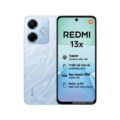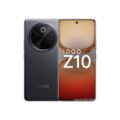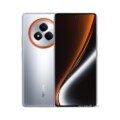- Latest Product
- Product
- Mobiles
- Poco X6 5G
Xiaomi New Device
-->Poco X6 5G Full Details
Basic info
| Brand | Xiaomi |
| Model | Poco X6 5G |
| Category | Smartphone |
| Status | Released |
| Launch Announcement | January 11, 2024 |
| Launch Date | January 11, 2024 |
Network Connection
| Network Type | GSM / HSPA / LTE / 5G |
| 2G Network | |
| 3G Network | |
| 3G Bands | HSDPA 850 / 900 / 1700(AWS) / 1900 / 2100 |
| 4G Network | |
| 4G Bands | 1, 2, 3, 4, 5, 7, 8, 12, 13, 17, 18, 19, 20, 26, 28, 32, 38, 40, 41, 66 |
| 5G Network | |
| 5G Bands | 1, 3, 5, 7, 8, 20, 28, 38, 40, 41, 66, 77, 78 SA/NSA/Sub6 |
| Speed | HSPA, LTE-A, 5G |
| GPRS GPRS (General Packet Radio Service) is a packet oriented mobile data service on the 2G and 3G cellular communication system's global system for mobile communications (GSM), Generally, GPRS is used for the purpose of wireless data transfer, such as sharing pictures and videos or browsing the Internet via a mobile phone connection. |
Body
| Dimensions | 161.2 x 74.3 x 8 mm |
| Weight | 181 g |
| SIM Card | Dual SIM (Nano-SIM, dual stand-by) |
| Colors |
Black, White, Blue |
| Build | Corning Gorilla Glass Victus, back Glass, plastic frame |
| Protection | Corning Gorilla Glass Victus |
| Features | IP54, dust and splash resistant |
Display
| Display Type Display Technology => A number of display technologies and types used in mobile phones => TFT (Thin Film Transistor), IPS (In-Place Switching), OLED (Organic Light Emitting Diode), AMOLED (Active-Matrix Organic Light-Emitting Diode), Super AMOLED (an even advanced version of AMOLED), Resistive Touchscreen (Resistive touchscreens contain two layer of conductive material with a very small gap between them which acts as a resistance), Capacitive Touchsceen (Capacitive touchscreen technology consists of a layer of glass coated with a transparent conductor) | AMOLED |
| Size | 6.67 inches |
| Ratio | 20:9 ratio |
| Resolution | 1220 x 2712 pixe |
| Pixel Density Pixel Density (PPI) is refers to the concentration of pixels on a particular display, measured in pixels per inch (ppi). Pixel density is calculated by dividing the diagonal pixel resolution of a display by its diagonal size, higher pixel density better display quality. | 446 ppi |
| Multitouch | |
| Display Protection | Corning Gorilla Glass Victus |
| Refresh Rate | 120Hz |
| Features |
68B colors Dolby Vision 500 nits (typ) 1200 nits (HBM) 1800 nits (peak) |
Hardware
| CPU CPU (Central Processing Unit) mostly known as processors, CPU processes instructions in order to carry out certain functions that make your device operate properly. Processors are often described as the brain of computers, smartphones and tablets, Smartphones and tablets rely on processors to carry out their every task, Processors are an incredibly important factor in selecting any type of computing device, including your smartphone. | Octa-core (4x2.40 GHz & 4x1.95 GHz) |
| GPU GPU (Graphics Processing Unit) is a single-chip processor designed to rapidly manipulate and alter memory to accelerate the creation of images in a frame buffer intended for output to a display, This includes things such as lighting effects, object transformations, and 3D motion. | Adreno 710 |
| Chipset Chipset is a group of integrated circuits designed to perform one or a more dedicated functions, often with real time computing constraints, Popular smartphones are equipped with more advanced embedded chipsets that can do many different tasks depending on their programming. | Qualcomm SM7435-AB Snapdragon 7s Gen 2 (4 nm) |
| RAM | 8/12 GB |
| Internal Storage Internal Storage is a data storage space (flash memory) mostly used in smartphones, tablets and other electronic devices where operating system, apps, music, photos, videos, files and other user data Is stored. | 256/512 GB |
| Memory Slot | Yes, microSDXC (dedicated slot) |
| Version | 8/256, 12/256 GB, 12/512 GB |
| Storage Type | UFS 2.2 |
Software
| Operating System OS => Every computer system run on a base software called Operating System (OS). Operating System controls all basic operations of the computer (such as smartphone, PDAs, tablet computers and other handheld devices). The Operating System allows the user to install and run third party applications (apps), apps are used to add new functionality to the device. | Android |
| Version | 14, upgrade to Android 14 |
| User Interface UI or user interface of a device is the look and feel of the on-screen menu system. How it works, its color scheme, how it responds to button presses, all of these things are part of the user interface. | MIUI 14 |
Main Camera
| camera |
64 MP, f/1.8, 25mm, 0.7µm, PDAF, OIS (wide) 8 MP, f/2.2, 118˚ (ultrawide) 2 MP, f/2.4, (macro) |
| Features | LED flash, HDR, panorama |
| Video | 4K/30fps, 1080p-30/60fps, gyro-EIS |
Selfie Camera
| camera | 16 MP, f/2.5, (wide) |
| Video | 1080p-30/60fps |
Multimedia
| Loudspeaker | Yes, with stereo speaker |
| 3.5mm Jack | |
| Audio Features | 24-bit/192kHz Hi-Res & Hi-Res Wireless audio |
Connectivity
| Wi-fi Wi-Fi is a popular wireless networking technology using radio waves to provide high-speed network connections that allows devices to communicate without cords or cables, Wi-Fi is increasingly becoming the preferred mode of internet connectivity all over the world. | Wi-Fi 802.11 a/b/g/n/ac, dual-band, Wi-Fi Direct |
| Bluetooth Bluetooth is a wireless communications technology for exchanging data between mobile phones, headsets, computers and other network devices over short distances without wires, Bluetooth technology was primarily designed to support simple wireless networking of personal consumer devices. | 5.2, A2DP, LE |
| Wi-fi Hotspot | |
| FM Radio | |
| USB | USB Type-C, OTG |
| OTG | |
| GPS | |
| NFC NFC (Near field communication) is a set of standards for smartphones and similar devices to establish peer-to-peer radio communications with each other by touching them together or bringing them into proximity, usually no more than a few inches. |
Security
| Fingerprint | Fingerprint (under display, optical) |
| Sensors Sensors are electronic components that detects and responds to some type of input from the physical environment. The specific input could be light, heat, motion, moisture, pressure and location, The output is generally a signal that is converted to use in computing systems, a location sensor, such as a GPS receiver is able to detect current location of your electronic device. | accelerometer, gyro, proximity, compass |
Power
| Battery Type | Li-Po non-removable |
| Battery Capacity | 5100 mAh |
| Battery Charging | Fast charging 67W |
| Fast charging | |
| Wireless Charging |
Price
| United States Price in United States. price us |
8/256 GB- 290$ (About) 12/256 GB- 320$ (About) 12/512 GB- 350$ (About) |
| India |
8/256 GB- 22,999 (official) 12/256 GB- 24,999 (official) 12/512 GB- 25,999 (official) |
1. When is the expected release date for the Xiaomi Poco X6 5G?
Answer: The Xiaomi Poco X6 5G is anticipated to be released in January 2024.
2. What are the camera specifications of the Xiaomi Poco X6 5G?
Answer: The Poco X6 5G features a triple camera setup with a 64 MP wide lens, 8 MP ultrawide lens, and a 2 MP macro lens. It supports 4K video recording at 30fps and 1080p at 30/60fps with gyro-EIS. The selfie camera is 16 MP with 1080p@30/60fps video recording.
3. Tell me more about the display of the Xiaomi Poco X6 5G.
Answer: The Xiaomi Poco X6 5G boasts a 6.67-inch AMOLED display with Dolby Vision, a 120Hz refresh rate, and a resolution of 1220 x 2712 pixels. It provides an immersive viewing experience with up to 1800 nits peak brightness.
4. What processor powers the Xiaomi Poco X6 5G?
Answer: The Poco X6 5G is equipped with the Qualcomm SM7435-AB Snapdragon 7s Gen 2 (4 nm) chipset, featuring an octa-core CPU (4×2.40 GHz & 4×1.95 GHz) and Adreno 710 GPU.
5. How much internal memory does the Xiaomi Poco X6 5G have?
Answer: The phone offers different internal memory variants, including 256GB with 8GB RAM, 256GB with 12GB RAM, and 512GB with 12GB RAM, utilizing UFS 2.2 technology.
6. What is the battery capacity and charging speed of the Xiaomi Poco X6 5G?
Answer: The Xiaomi Poco X6 5G is powered by a non-removable 5100mAh battery and supports 67W wired charging, claiming to reach 100% charge in just 44 minutes, as advertised.
You can visit Poco X5 5G















